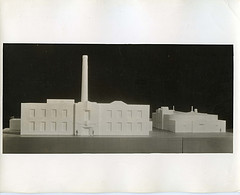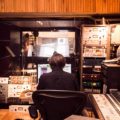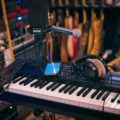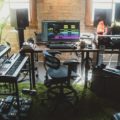Perhaps you have a passion for the arts and enjoy listening to classical, rock and roll, or have 250 harmonized a cappella vinyl records in your collection. Regardless of your musical tastes, have you ever thought about learning how to read sheet music How To Read Piano Piece Music Fast - Learning to play the piano and read sheet music doesn't have to be intimidating. You don't need an exceptionally high IQ for this; all you need is perseverance and consistent practice, along with an easy-to-read piano sheet. By following some guidelines, learning can become easier. Here are some tips to help you as you gradually… seriously?
Many people with creative mindsets have. If you are one of those eager to take a piece of melody and play or sing a tune, then you’ll want to consider this guide.
Competence vs. Study
Contrary to popular belief among beginners, reading sheet music is not just for those with tons of natural talent. While it does help to start with some musical ability and have a sense of rhythm, it’s not essential.
When You Really Want to Learn to Read Sheet Music Notes
If you’re looking to start playing an instrument or learning to sing, you should learn to read music notation for beginners. Unless you can read sheet music, you’ll likely have a hard time learning your instrument, which is why before you even begin trying to play, you should learn the basics of reading musical notation.
Just About Everyone (Who is Anybody)
All the great composers The Emperor's New Clothes - Ananda Sukarlan is an Indonesian composer and pianist living in Spain. This is an article he wrote for a magazine which has been published a few years ago in Spanish. We are very proud to have the original in English which has never been published anywhere, so this is an exclusive writing for ManuelMarino.com. Read… in history and many contemporary musicians know how to read sheet music – it’s a crucial skill regardless of what instrument you play, be it piano, violin, guitar, or something else. However, it may seem intimidating to beginners due to the variety of symbols and figures that are not seen anywhere else in sheet music arrangements.
Thankfully, when the piece is broken down into parts, reading music for beginners is as simple as tying your shoes! Here are some of the most basic elements of reading sheet music.
The Staff
You have probably seen musical notation on a sheet before – they have lines going horizontally across the page, and there are small dots and symbols that sit on the lines. The lines are known as the staff, and the large symbol at the beginning of the staff is called the clef.
Treble Clef
The most common clef is the treble clef – it looks somewhat like a fancy, curly S. The clef indicates which notes go where on the staff.
On a treble clef staff, the notes are arranged in sequence on the lines and between the lines. Each line is for a different note, and each space is for a different note as well. From bottom to top, the notes E, G, B, D, and F go on the lines, and the notes F, A, C, and E go between the lines.
Notes from A to G
An easy trick to commit notes to memory is by remembering “Every Good Boy Does Fine” and “Face.” So, if you see a note on the B line, you play a B note. And if you see a note in the A space, you play an A note.
Hiring a Music Teacher
The other aspects of reading sheet music and learning music theory can be found in books and online guides. Alternatively, if you have the means, you may want to take private music lessons from a professional teacher.
Regardless of which method you choose, once you learn how to read sheet music, you’ll never forget. Isn’t it time you expanded your musical knowledge? Take some time, develop your skill, and learn music notation the right way!
Manuel Marino is a seasoned Senior Producer, Music Composer, and Artist with over a decade of experience. He specializes in branded entertainment across various mediums, including video games, films, and advertising campaigns. With 20+ years as a game music composer, Manuel has worked on numerous platforms, creating diverse orchestral soundtracks. HIRE ME


 Manuel is a passionate, driven, and techsavvy AV technician,
Manuel is a passionate, driven, and techsavvy AV technician, 




